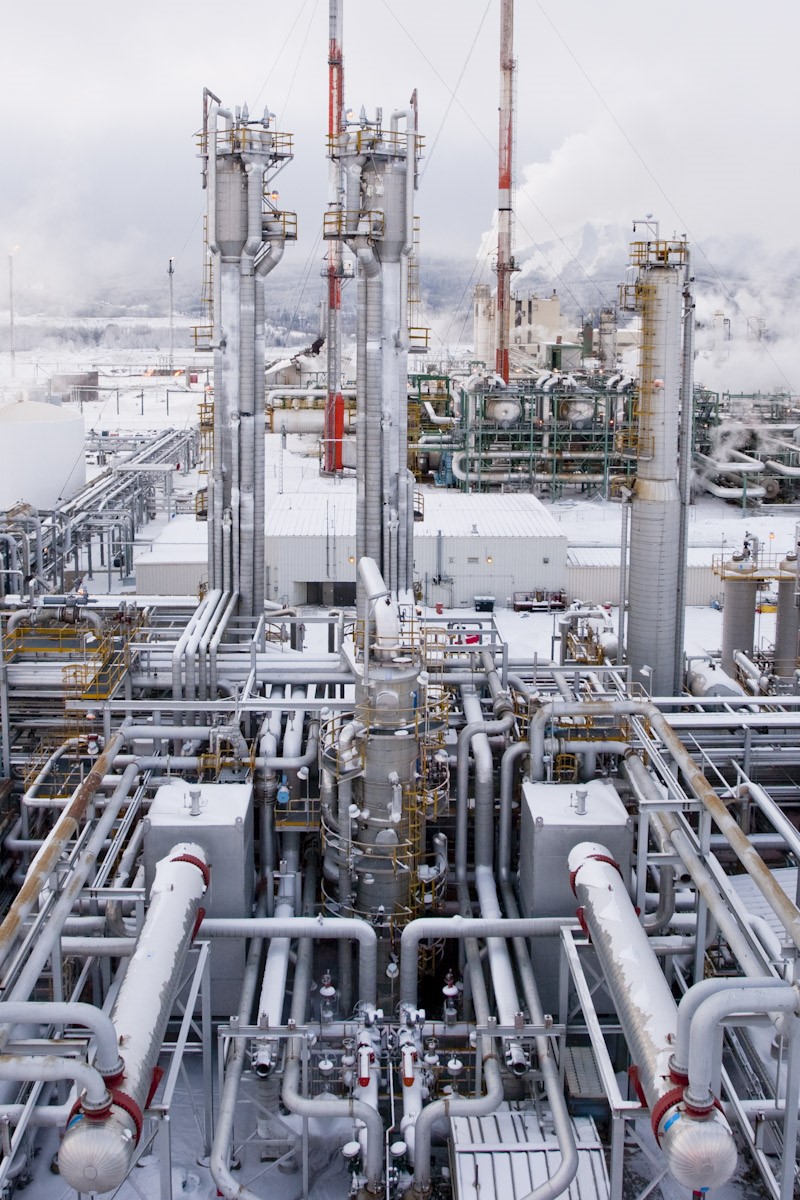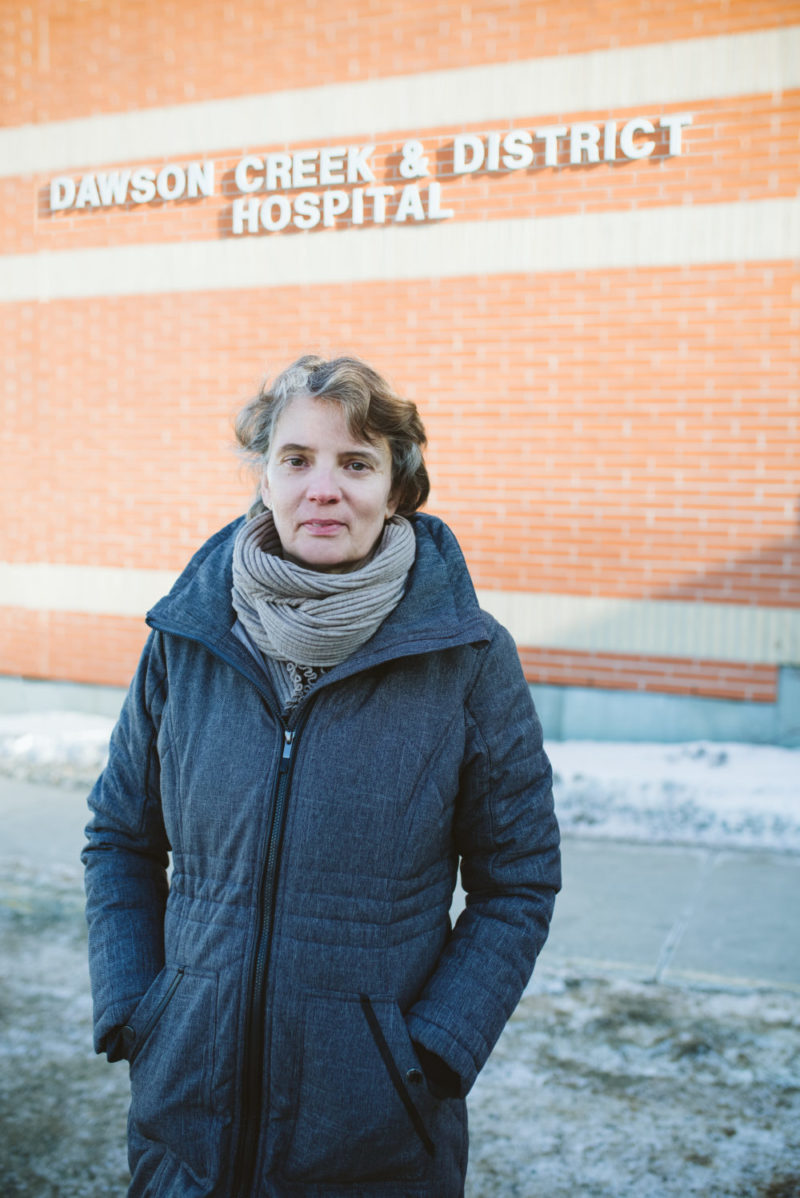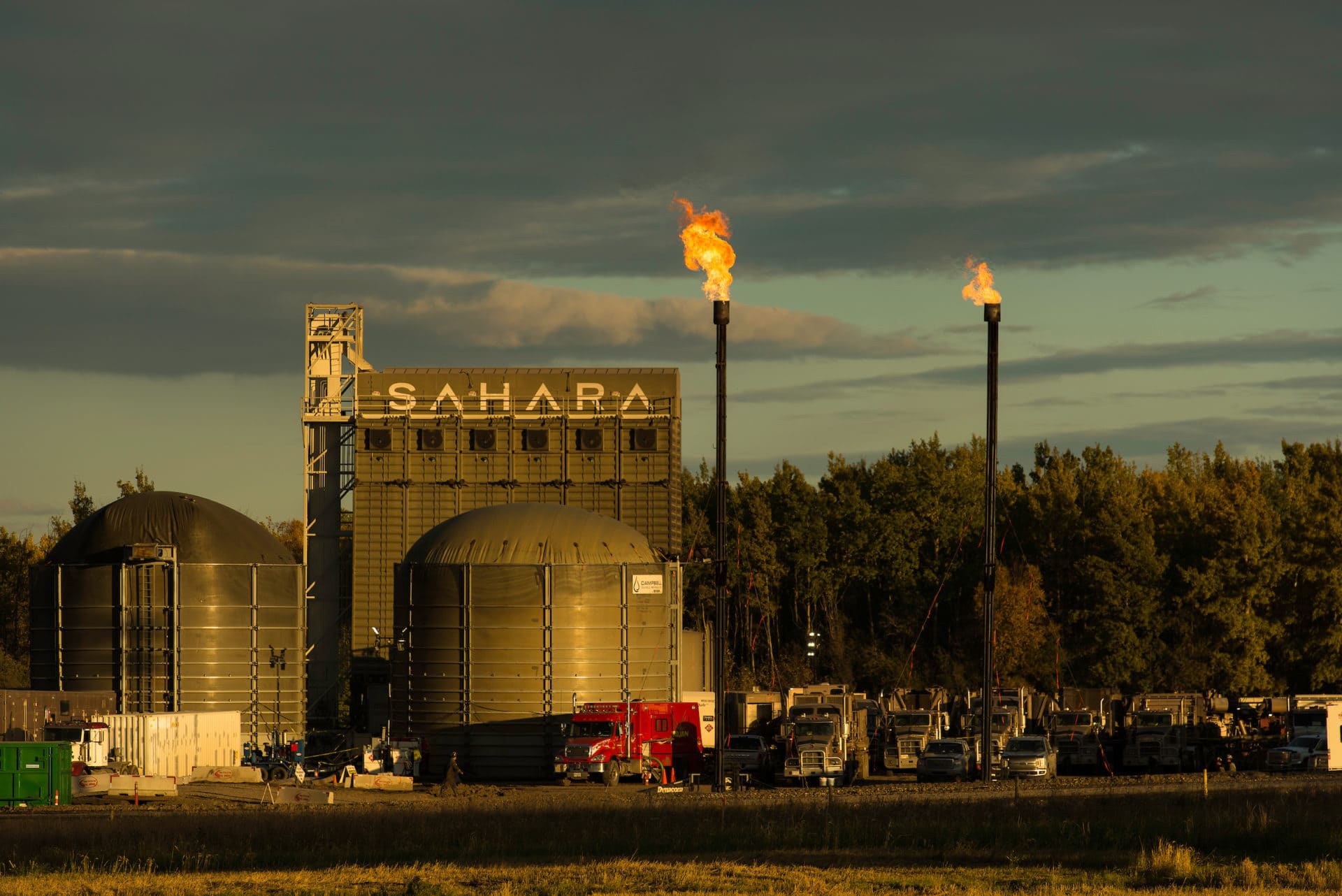
‘A new reality’: B.C. glacier collapse forces guides to confront risks of rapidly melting world
As glaciers in Western Canada retreat at an alarming rate, guides on the frontlines are...
Ulrike Meyer remembers when she first visited Canada as a medical student in 1985 and thought it strange how chemical regulations were so lax compared to those in her home country.
“You could buy bleach by the gallons to clean your house,” she recalls. “In Germany you needed a licence to get a small quantity of bleach — and you had to justify what you were using it for.”
After starting her residency training in Vancouver, Meyer interned in rural locations across the province while calling an off-the-grid organic farm 125 kilometres north of Dawson Creek home.
A full-service rural physician, Meyer works full-tilt in obstetrics, operating-room assists, nursing-home care and outpatient clinics in a region beset by the most dramatic increase in fracking operations anywhere in the country.
Meyer is tracking the province’s plans to develop a major liquefied natural gas (LNG) industry with a watchful eye, knowing the vast majority of the gas extracted in B.C. is done so through fracking.
And while plans to further develop gas plays in northeastern B.C. are celebrated at the government level as ensuring an economic windfall, Meyer says a wave of health impacts are sweeping the region without adequate monitoring and research.
A recent independent scientific review of fracking commissioned by the B.C. government seems to shore up Meyer’s concerns.
The report concluded that not only is our understanding and monitoring of its effects on surface and groundwater sorely lacking, but the province is also profoundly ignorant of fracking’s possible public health risks. (The independent scientific review did not include an examination of the public health implications of fracking.)
Fracking in northeast B.C. began in earnest in the early 2000s, but the reality of the industry’s impact hit Meyer afresh this past summer.
“We got a notification letter about a multi-well pad extension on the hill in our neighbourhood on June 15, 2018. [My husband] hid it at first because he thought I would be upset.”
As Meyer began to do initial research on the health effects of fracking she was distressed to learn that neighbourhood air-quality monitoring around operations was minimal or non-existent. No biometric data was collected from the local population before or after the multi-well pad was put in.
Regulations appeared weak.
Meyer and her neighbour Karen Leven, an environmental scientist, immediately began to canvass their neighbourhood to see how others viewed the proposed extension. Despite generating 50 letters of complaint and concern, the community’s opposition fell on deaf ears.
“They would only need one neighbour … in the consultation zone who would sell out, so they would handpick someone who worked for oil and gas, offer him a new road and he would say yes even if there were others in close proximity with sheep and young kids,” Meyer says.
She adds that companies find sympathetic individuals within a community and play neighbours off one another.
“Most neighbourhoods gave up after a while.”
With Meyer’s new awareness of the growing industry footprint came clues in her practice that all was not well with her patients.
The fracking boom has seemingly had measurable impacts on the health of the community. With the wells on the landscape and burgeoning man camps came higher rates of sex-trade work, sexually transmitted infections and drug use as transient young men from across the country arrived.
And though large amounts of money flowed through town, Meyer said she’s seen poverty among locals increase.

A gas plant in northeast B.C. Photo: supplied

Meyer outside the Dawson Creek hospital. Photo: Sabrina May Photography
Before the fracking boom, Meyer’s neighbour rented a one-bedroom apartment for $420 per month. After the boom and some homeowner renovations, that same apartment now fetches over $1,000.
“Many people work minimum wage so they can’t even cover rent and food. There’s a big discrepancy between having and not having.”
In Meyer’s world, however, fracking’s dangers don’t just come from these more visible impacts that weigh on her patients. Less visible changes are taking place as well.
Last July during a staff meeting at Dawson Creek Hospital, radiologist Charles Larsen told Meyer and a group of colleagues he had just diagnosed his tenth case of glioblastoma — the lethal brain cancer that killed Tragically Hip frontman Gord Downie.
“Counting back in retrospect, 10 is not an official number but that’s what I recall seeing in my office,” Larsen said in an interview.
Larsen, who had practised for three decades in Cape Town had only ever come across four cases of glioblastoma. Now, after seven years in Dawson Creek, he’d encountered 10.
“After a couple of years I realized I was seeing more than I’ve ever seen before … and I’d previously been dealing with a larger population.”
With a catchment area of 30,000 patients, and a typical glioblastoma incidence of two to three per 100,000, the total number of cases in Dawson Creek should have been about half that, at five.
Larsen said on a night flight into the area he counted 10 active flares, which burn off excess or unwanted gas at oil and gas well sites.
“These are all petrochemical fumes being released into the atmosphere. You just wonder how it’s controlled.”
There are no studies on glioblastoma in northeast B.C., but research suggests an environmental link between benzene and brain cancer and other kinds of cancer.
And then there was the story of Sukh Sarkaria, an internist who diagnosed ten cases of idiopathic pulmonary fibrosis in the two short years he’d worked in Dawson Creek.
This rare disease progressively scars the lungs, beginning with an insidious dry cough and breathlessness, followed by death within an average of four years of diagnosis. Risk factors include smoking, radiation and inhaled pollutant exposure. Sarkaria said the number of cases of idiopathic pulmonary fibrosis in Dawson Creek stood out to him.
Sarkaria now practises in Surrey, B.C., far from fracking country, where, after several months, he has yet to see a case of the same disease.

A new natural gas well pad with numerous wells is readied for fracking near Farmington, B.C., a 20-minute drive from Dawson Creek. Photo: Garth Lenz / The Narwhal
Meyer had her own experiences too.
“I have some patients whose symptoms I can’t explain,” she says.
“There’s one, an older farmer in his mid 70s, who likes to dance. His farm was surrounded by a multi-well pad and open waste-water tanks. Shortly after the flares went up he developed episodes where he would suddenly pass out.”
On one occasion this patient slumped over in his chair while playing cards with friends.
“We adjusted his medications, did a Holter [heart monitor test], CT angiogram, brain scans and referred him to a specialist in Edmonton, but couldn’t come up with anything. When they were done with all the fracking activity and sealed the sites two years ago, his symptoms disappeared. He’s had no other episodes since.”
For Meyer, other stories came from even closer to home.
Her neighbour, who used to live in another part of town, developed severe nosebleeds after flaring began at nearby fracking operations.
“At night when he was sleeping he would almost choke on the blood. His wife would wake him up because of the sound,” she says.
Selling everything, including a prized renovated farm and his business, the neighbour and his wife moved to Arizona.
“It took three months to stop. He came back three years later, re-bought his business and moved to my neighbourhood, where there’s no flaring.”
His wife told Meyer she’s never bought so many pillows.
Meyer wanted to know whether or not these disease patterns were significant.
Not getting far on her own, she consulted the librarian at the College of Physicians and Surgeons of British Columbia. After combing through eight different databases, from Statistics Canada to Medline to Google, the librarian had no luck either, Meyer says.
Eventually Dr. Jong Kim, the medical health officer for the province’s northeast, managed to get her one relevant study: a report on cancer rates in the Peace River region as compared to the rest of Northern B.C. from 2005-2014.
The study found cancer rates in the Peace River region were mostly consistent with cancer rates across Northern B.C. but Meyer was bothered to find the study did not include statistics on brain cancer.
The research also identified an elevated risk of leukemia — which evidence has linked to benzene exposure, a cancer-causing chemical found in high concentrations at well sites and in fracking wastewater — but the researcher concluded this increase was not statistically significant compared to the rest of Northern B.C. Given the small population numbers involved in the analysis, however, it would be difficult to tease out anything but dramatic trends.
Meyer would like to see an analysis that compares her local cancer rates to the rest of B.C., a more varied and robust population size.
Dr. Élyse Caron-Beaudoin, a toxicologist and post-doctoral researcher at the Université de Montréal Public Health Research Institute, said nosebleeds are a well-documented side effect of increased levels of volatile organic compounds (VOCs) in the air, which are released during fracking activity.
But not enough research is being done in Canada on the health impacts of fracking, Caron-Beaudoin added in a phone interview.
“In the U.S. there’s an increasing number of studies — especially epidemiological studies that look at proximity to fracking wells and effects … What’s coming up in those studies are respiratory issues [like] asthma. There are also people that reported different symptoms like headaches and nosebleeds.”
Caron-Beaudoin said while these studies are more likely to demonstrate association rather than direct cause and effect, “they can verify that if you are closer to fracking activity you are more likely to see such symptoms or more likely to be hospitalized.”
In a 2018 pilot study, Caron-Beaudoin found elevated levels of benzene metabolites in the urine of 29 pregnant women in the Peace River region. The study found a byproduct of benzene was 3.5 times higher in women in the area than the national average. That figure jumped up to six times higher in Indigenous women.
“Regulatory agencies should be interested in doing more research [on pregnant women] especially because data in the U.S. points towards an association between being close to fracking wells and some serious health issues: low birth weights, preterm birth, congenital heart defects,” Caron-Beaudoin said.
“If industry is here to stay, fair enough, [but] let’s make sure [they] protect the general population and workers because they’re the ones most exposed to those chemicals.”
For her part, Meyer takes extra time to counsel women about the possible implications of fracking on their pregnancies.
“I tell them not to work anymore, especially if they’re exposed to gas on a regular basis. Many times they’re not aware how dangerous it could be to the developing fetus. Some do quit their jobs.”
In the end, what is perhaps most telling is the restlessness of physicians in her town.
She hears that many of the younger doctors are considering moving south, mostly due to their concerns about the quality of local schools and health effects of the fracking industry. But their ties to the community (not to mention a rural medicine retention bonus to the tune of over $20,000 per year) so far have prevented a mass exodus — much like the lure of the riches of the oil and gas industry for other residents of Dawson Creek.
Meyer is on call for a local nursing home the day we speak. From time to time she has to pause to take a call from a nurse before resuming her thoughts about fracking and long-term accountability.
“It is not acceptable that an industry makes billions of dollars and doesn’t return anything to the community,” she says.
Diminished air quality, water quality and health are all collateral damage from industry, Meyer said, also pointing to the fact that companies facing bankruptcy leave the province holding the bill for well site cleanup and remediation.
“It’s a high price to pay for the public. I can’t make the industry go away, but they should have to comply with strong regulations.”
B.C. left holding massive bill for hundreds of orphan gas wells as frack companies go belly-up
Meyer also replies decisively when asked about the changes she would like to see as a physician.
“We should be able to test the canaries in the coal mines who might be getting symptoms from exposure to toxins. We should have a fund provided by the oil and gas industry to do toxicology studies on them. I think we should use a top-down approach: test the humans and animals, and the environment — because we breathe the air, we drink the water and are part of the web of life.”
From March 31 to April 4 2019, the Canadian Association of Physicians for the Environment is presenting a multi-city speaker series featuring residents of the Peace River region called “Voices from the Sacrifice Zone: Fracking in B.C.’s North” across Vancouver Island and the Lower Mainland. Click here for dates and registration information.
Enbridge Gas will face Waterloo Region in a hearing before the Ontario Energy Board to renew an agreement that would allow the company to continue...
Continue reading
As glaciers in Western Canada retreat at an alarming rate, guides on the frontlines are...

For 15 years and counting, my commute from Mississauga to Toronto has been mired by...

For our last weekly newsletter of the year, we wanted to share some highlights from...